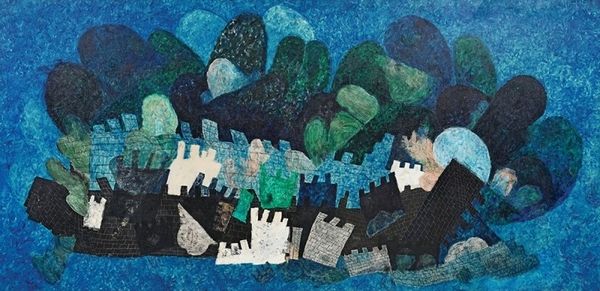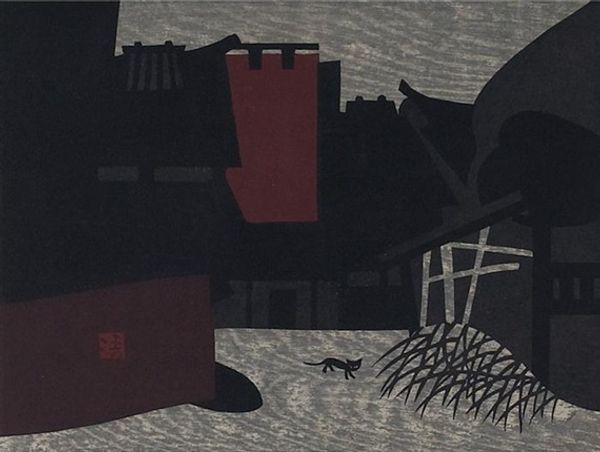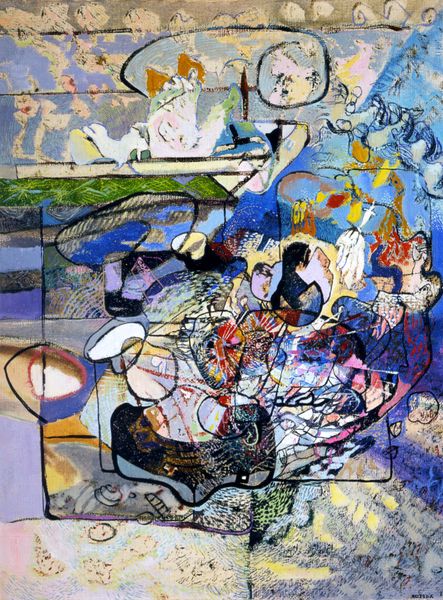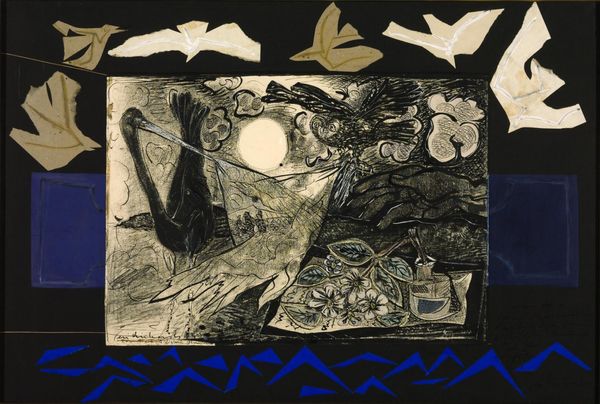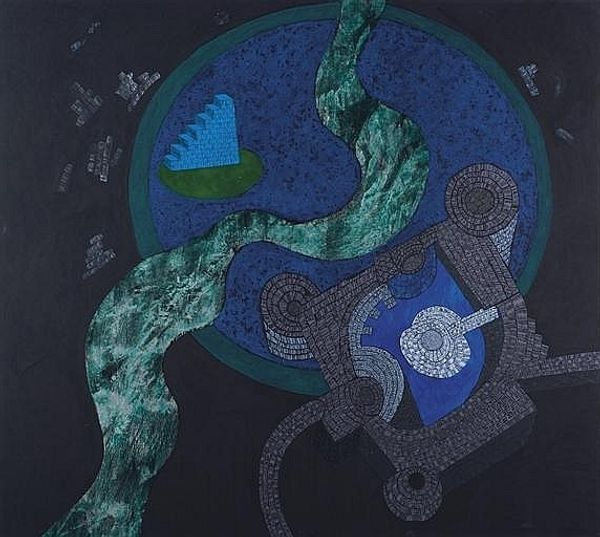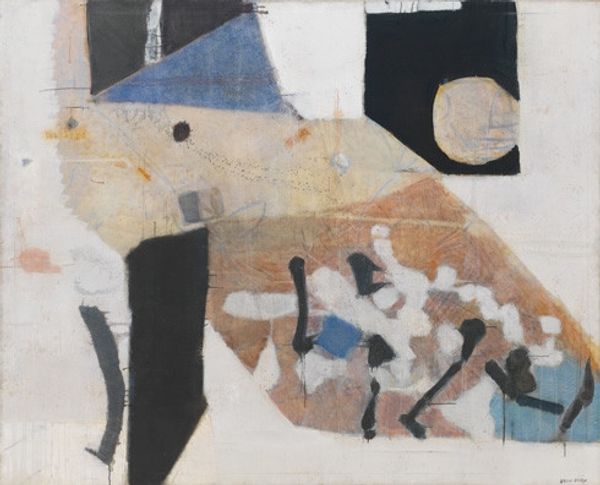
Copyright: Erol Akyavaş,Fair Use
Editor: So, here we have "Fallen City," a 1982 acrylic on canvas by Erol Akyavaş. The colors are incredibly striking, this dominant, almost bruised-purple hue, but also… really unsettling. What strikes you about it? Curator: The "fallen" aspect immediately points to a social commentary. Akyavaş, working in 1982, inherits a tradition of artists using cityscapes to represent societal anxieties. This period, globally, was marked by rapid urbanization, anxieties about modernism, and a feeling of displacement. How does the abstraction, for you, either heighten or diffuse those potential anxieties? Editor: That's interesting. The abstraction makes it harder to pinpoint a specific city or event, but somehow, it universalizes the feeling, like any city could be subject to this… decay? It’s almost post-apocalyptic, though subtly so. Curator: Precisely. And consider the role of institutions – the art world itself – in shaping how we view this 'decay.' By exhibiting works like "Fallen City," are galleries offering a critical lens, or perhaps aestheticizing urban decline for consumption? What effect does knowing this piece would, from its creation, likely exist in a gallery, have on your interpretation? Editor: I guess it does change things. Knowing it was created, in some sense, for the 'gaze' of the art world, makes me wonder if it's meant to be a critique of societal collapse but also, as you suggest, if there is an element of spectacle involved, that somehow dulls its political intention? Curator: Exactly. Think of the tradition of ruins in art history; they're often romanticized. So, is Akyavaş replicating, or challenging that tradition with his abstracted "fallen" city? The painting also seems to have aspects of graffiti art, a kind of rebellion against establishment culture. Do you think graffiti lends a feeling of immediacy to what could otherwise be an abstracted comment on urban society? Editor: Yes, I see the link, and hadn't spotted the graffiti references before, thank you! Thinking of this art piece within broader society gives me new ways to understand the artwork! Curator: Absolutely. By viewing it through the lens of social and political history, and asking critical questions about how art institutions operate, "Fallen City" becomes a powerful reflection of our complex relationship with the urban environment and its future.
Comments
No comments
Be the first to comment and join the conversation on the ultimate creative platform.
